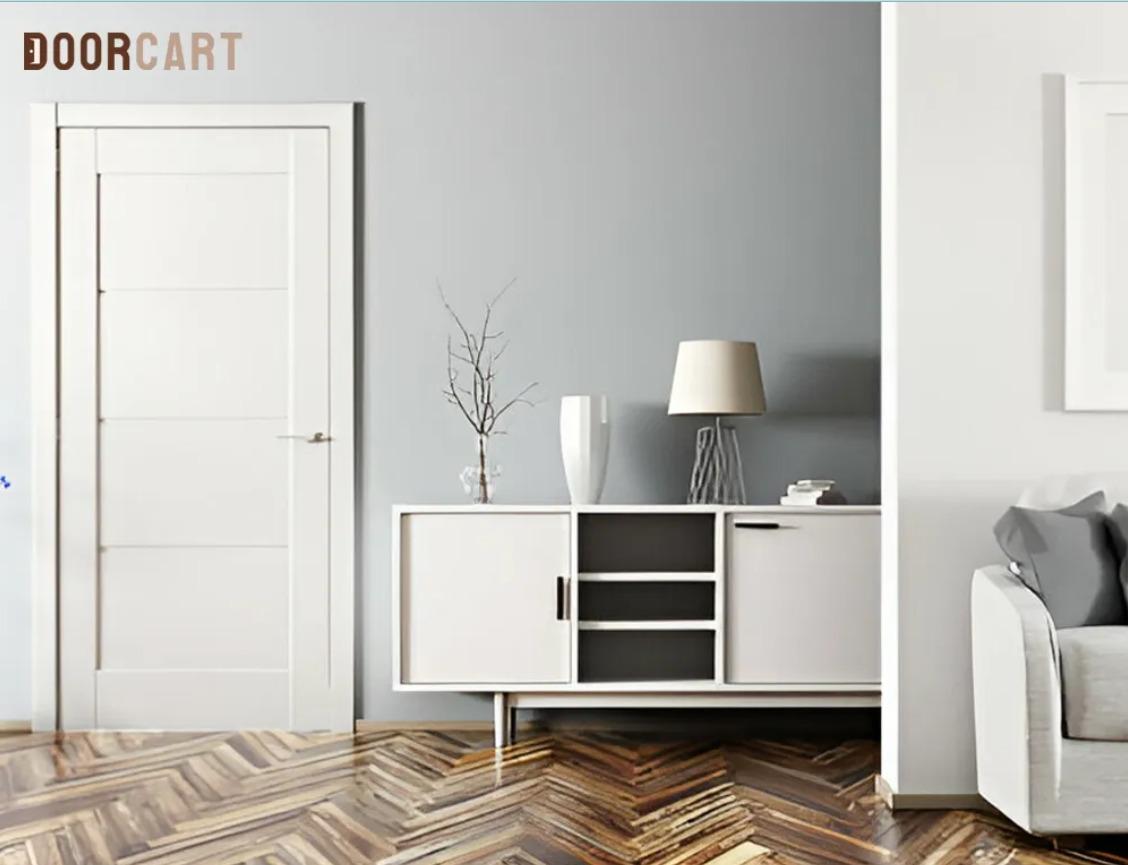When selecting interior doors for your home or office, two of the most common options are hollow core doors and solid core interior doors. Each type has its advantages and disadvantages, depending on factors like budget, durability, sound insulation, and aesthetic preferences.
In this comprehensive guide, we’ll explore the differences between hollow core and solid core interior doors, their pros and cons, and which one is best suited for different applications.
1. What Is a Hollow Core Door?
A hollow core door is a lightweight interior door constructed with a thin veneer (usually wood or composite) surrounding a honeycomb or grid-like cardboard core. The edges are reinforced with a solid wood frame to provide stability for hinges and locks.
Pros of Hollow Core Doors:
✅ Affordable – One of the cheapest door options, making them ideal for budget-conscious homeowners.
✅ Lightweight – Easy to install and handle, reducing strain on hinges and frames.
✅ Easy to Customize – Can be painted or stained to match interior décor.
✅ Good for Low-Traffic Areas – Suitable for closets, pantries, and other rarely used spaces.
Cons of Hollow Core Doors:
❌ Poor Sound Insulation – The hollow interior allows sound to pass through easily.
❌ Less Durable – Prone to dents, scratches, and warping over time.
❌ Weak Security – Easily damaged, making them unsuitable for exterior or high-security areas.
Best Uses for Hollow Core Doors:
-
Closet doors
-
Laundry room doors
-
Pantry doors
-
Temporary or rental property doors
2. What Is a Solid Core Interior Door?
A solid core door is constructed with a dense inner core (often made of particleboard, MDF, or solid wood blocks) and covered with a hardwood veneer or laminate. While not completely solid like an exterior door, it offers much better durability and insulation than a hollow core door.
Pros of Solid Core Doors:
✅ Superior Soundproofing – Reduces noise transfer between rooms, ideal for bedrooms and offices.
✅ More Durable – Resists dents, scratches, and warping better than hollow core doors.
✅ Better Insulation – Helps with temperature control and energy efficiency.
✅ Enhanced Security – Harder to break, making them suitable for home offices or private spaces.
Cons of Solid Core Doors:
❌ More Expensive – Typically 2-3 times the cost of hollow core doors.
❌ Heavier – Requires stronger hinges and proper installation to prevent sagging.
❌ Limited Design Options – Some styles may not be as customizable as hollow core doors.
Best Uses for Solid Core Doors:
-
Bedroom doors
-
Bathroom doors
-
Home office doors
-
High-traffic areas (hallways, entryways)
3. Key Differences Between Hollow Core and Solid Core Doors
| Feature | Hollow Core Door | Solid Core Door |
|---|---|---|
| Construction | Cardboard honeycomb core | Dense wood or composite core |
| Weight | Lightweight | Heavy |
| Cost | Budget-friendly | More expensive |
| Durability | Less durable, prone to damage | More resistant to wear and tear |
| Soundproofing | Minimal sound insulation | Good noise reduction |
| Security | Low security | Better security |
| Best For | Closets, low-traffic areas | Bedrooms, offices, high-traffic areas |
4. Which One Should You Choose?
The choice between a hollow core and solid core door depends on your needs:
Choose a Hollow Core Door If:
-
You need a budget-friendly option.
-
The door is for a low-traffic area (e.g., closet, pantry).
-
Sound insulation is not a priority.
Choose a Solid Core Door If:
-
You want better noise reduction (e.g., bedrooms, offices).
-
Durability and security are important.
-
You’re willing to invest in a long-term solution.
5. Installation and Maintenance Tips
For Hollow Core Doors:
-
Use lightweight hinges to prevent sagging.
-
Avoid excessive moisture, as it can warp the door.
-
Patch dents with wood filler and repaint as needed.
For Solid Core Doors:
-
Install heavy-duty hinges (at least 3-4 per door).
-
Ensure the door frame is sturdy enough to support the weight.
-
Regularly check for alignment issues to prevent sticking.
6. Conclusion
Both hollow core and solid core doors have their place in home design. If you're looking for an affordable, lightweight option for low-traffic areas, hollow core doors are a practical choice. However, if you need better soundproofing, durability, and security, investing in solid core interior doors is the way to go.
Before making a decision, consider your budget, the door’s location, and your long-term needs. By understanding the differences between these two types of doors, you can make an informed choice that enhances both the functionality and aesthetics of your space.
Final Recommendation:
-
Budget-friendly & low-traffic areas → Hollow Core Door
-
Noise reduction & high durability → Solid Core Door

